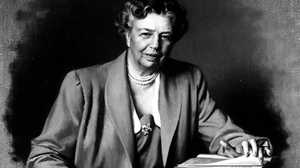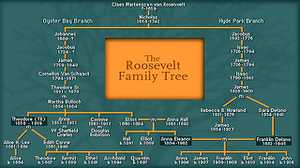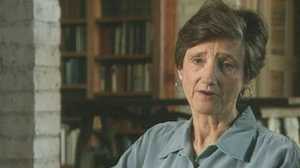Biography: J. Edgar Hoover

J. Edgar Hoover lived in Washington, D.C. all his life. In 1895 he was born in a white, Protestant, middle-class neighborhood known as Seward Square, three blocks behind the Capitol. His family had been civil servants for generations, including his father, Dickerson Naylor Hoover, who worked for the Coast Guard. Yet Hoover was closest to his mother, Annie, who was the disciplinarian and moral guide of the family. He lived with her until she died in 1938 in the house at Seward Square. Hoover was 43 years old at the time.
Hoover was extremely competitive during his young years. To overcome a stuttering problem, he developed a habit of speaking quickly, acquiring the nickname "Speed," and joined the debate team in high school. Desiring to enter into politics, he took night school courses while working at the Library of Congress. When the U.S. entered the war in 1917, Hoover obtained a draft-exempt position with the Department of Justice.
While working as a clerk, Hoover's efficiency and conservatism drew the attention of Attorney General A. Mitchell Palmer. In the midst of general hysteria concerning Communist infiltration of America after the war, anarchists bombed Palmer's home in 1919. The Attorney General used the attack to initiate a widespread clamp-down on radicalism. Hoover, with his strait-laced morality, was the natural choice to head the campaign. Later known as the "Palmer raids," the widespread attack on radicals were largely Hoover's operation. He organized raids to be carried out in three different cities on January 2, 1920. Not possessing search or arrest warrants, the enforcers paid no regard to who was and who was not guilty of insurrectionary activity. In the end, mass arrests were made and 556 people were deported.
While the methods of the Palmer raids were to eventually come into question (causing Palmer to resign in disgrace), Hoover's reputation remained clean. He emerged with the distinction of a man who had been loyal to his country. In 1924 President Calvin Coolidge appointed him head of the Bureau of Investigation, a position Hoover had long coveted. It was in this position that he finally received the power he craved. Hoover inherited the Bureau just after it had been severely tainted with scandal from previous administrations. Upon acceptance, Hoover demanded it be completely divorced from politics and responsible only to the Attorney General. Hoover's conditions were met and he set out on a rejuvenation campaign which would build the Bureau into one of the most powerful government agencies in 20th century America.
Hoover was functioning against a backdrop of rampant crime rings perpetrated by bootlegging gangsters. Hollywood and popular culture romanticized these figures into lawless heroes. To make his agency respectable, Hoover assembled an elite group of men, white and college-educated, who would represent the Bureau as agents. He demanded conformity and a strict moral code from all of them, demanding them to abstain from alcohol and relations with women. He instituted a training school and effectively made his organization into the symbolic guardian of the country's laws, citizens, and its morals.
He chose to systematically eliminate the glorified gangsters who were, by their mere existence, defaming the government and its laws. The campaign gained momentum in 1933 after a mob gunned down several of Hoover's agents who were escorting bank robber Frank Nash. Popularized as the "Kansas City Massacre," the event led Hoover on a rampage against notorious criminals such as John Dillinger, "Ma" Barker, and "Machine Gun" Kelly. Hoover was also eager to have all kidnapping cases under his jurisdiction. The infamous kidnapping of the Lindbergh baby in 1932 produced enough outrage to grant Hoover his wish with the enactment of the Lindbergh Law that same year.
The image of the all-powerful "G-man" who hunted for criminals and sleuthed with the latest technology appealed to the nation's need for a strong, active government during the Depression. Hollywood, radio, the press, and comic strips played on this new image of the government agent. With the F.B.I.'s domestic surveillance records, which often contained damaging information on people of public importance, Hoover could easily wield control over the public image of his agency.
In 1936 Roosevelt instructed Hoover to keep him informed on fascist and Communist activities in the U.S. Hoover took the opportunity to increase his domestic surveillance efforts and to maintain a "Custodial Detention List" which included names of "questionable" individuals for possible accusations during wartime. This list included Eleanor Roosevelt, whom he personally despised for her liberal leanings, and later, Martin Luther King, Jr. and John F. kennedy. Lyndon B. Johnson, a personal friend to Hoover, postponed the F.B.I. director's retirement indefinitely. Hoover remained with the Bureau until his death at the age of 77 in 1972.
By 1972 Hoover was approaching his 55th anniversary with the F.B.I.. He had never married or developed intimate relationships with women. He would not tolerate dissent and made public enemies out of anyone who dared to resist him. And while he often used means to secure information which curtailed personal freedoms, Hoover believed to the end that he had operated as the arbiter of the country's morals; to be, as his "G-men" were to the nation, the "guardian of the civic good.







